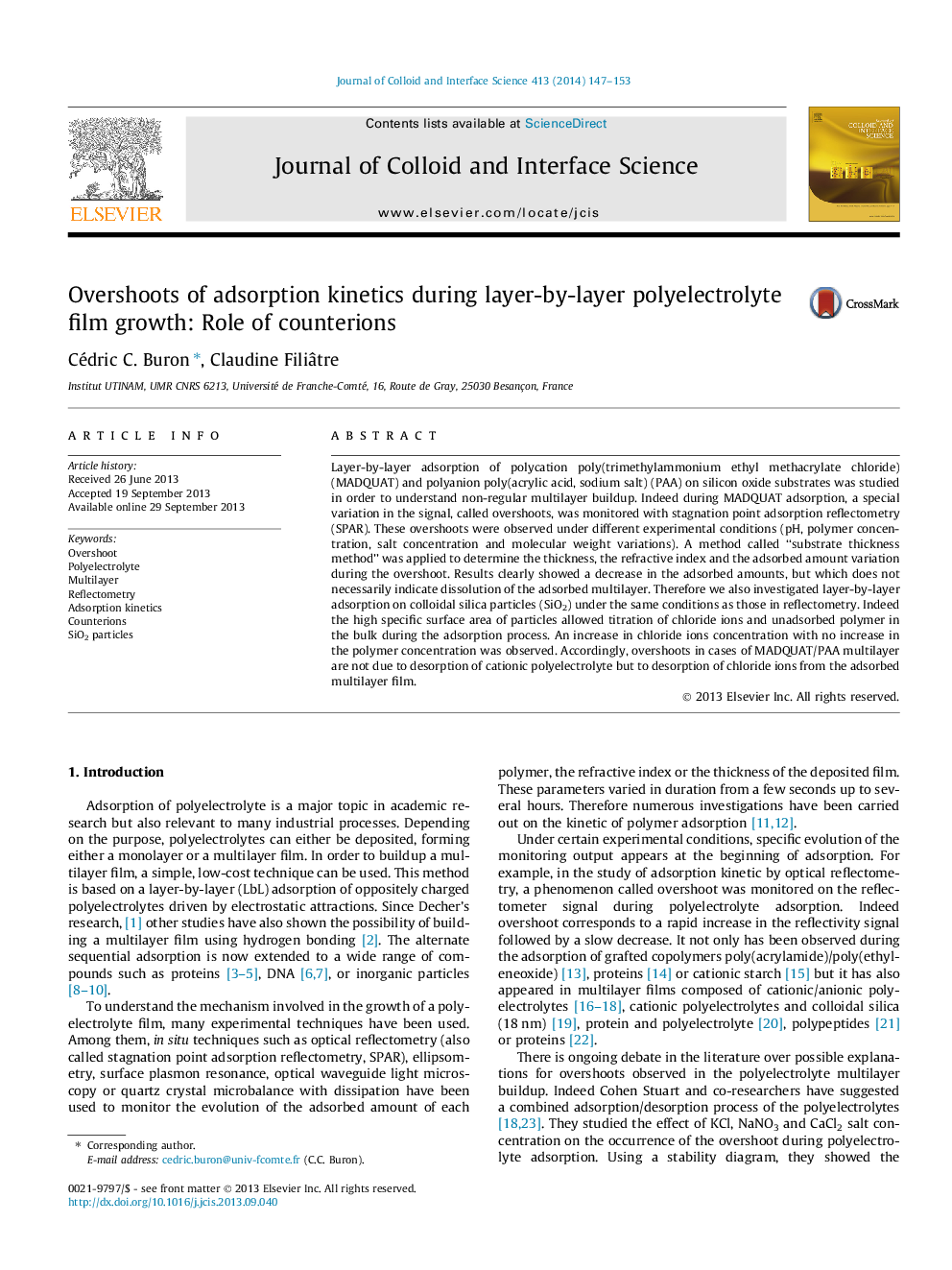| Article ID | Journal | Published Year | Pages | File Type |
|---|---|---|---|---|
| 607505 | Journal of Colloid and Interface Science | 2014 | 7 Pages |
•Polyelectrolyte multilayer adsorption followed in situ by optical reflectometry.•Use of silica particles to simulate adsorption onto planar substrates.•Overshoot appearance on reflectometry output during cationic polyelectrolyte adsorption.•Ejection of ions during adsorption of the cationic polyelectrolyte.
Layer-by-layer adsorption of polycation poly(trimethylammonium ethyl methacrylate chloride) (MADQUAT) and polyanion poly(acrylic acid, sodium salt) (PAA) on silicon oxide substrates was studied in order to understand non-regular multilayer buildup. Indeed during MADQUAT adsorption, a special variation in the signal, called overshoots, was monitored with stagnation point adsorption reflectometry (SPAR). These overshoots were observed under different experimental conditions (pH, polymer concentration, salt concentration and molecular weight variations). A method called “substrate thickness method” was applied to determine the thickness, the refractive index and the adsorbed amount variation during the overshoot. Results clearly showed a decrease in the adsorbed amounts, but which does not necessarily indicate dissolution of the adsorbed multilayer. Therefore we also investigated layer-by-layer adsorption on colloidal silica particles (SiO2) under the same conditions as those in reflectometry. Indeed the high specific surface area of particles allowed titration of chloride ions and unadsorbed polymer in the bulk during the adsorption process. An increase in chloride ions concentration with no increase in the polymer concentration was observed. Accordingly, overshoots in cases of MADQUAT/PAA multilayer are not due to desorption of cationic polyelectrolyte but to desorption of chloride ions from the adsorbed multilayer film.
Graphical abstractFigure optionsDownload full-size imageDownload high-quality image (48 K)Download as PowerPoint slide
